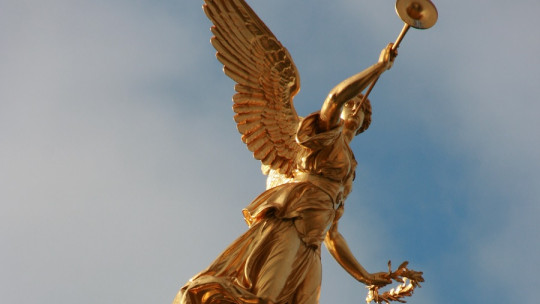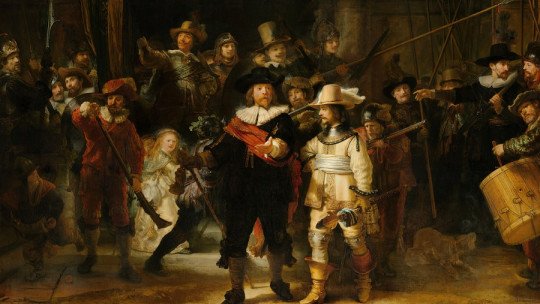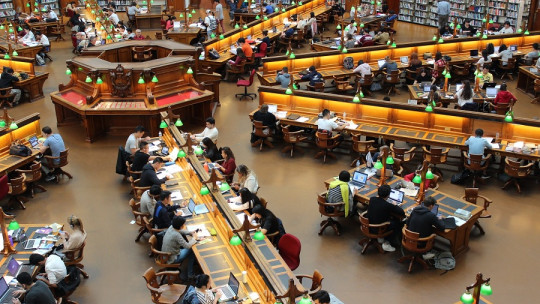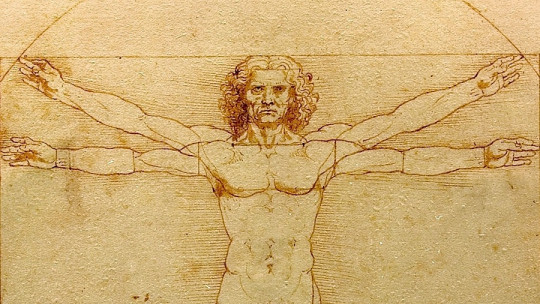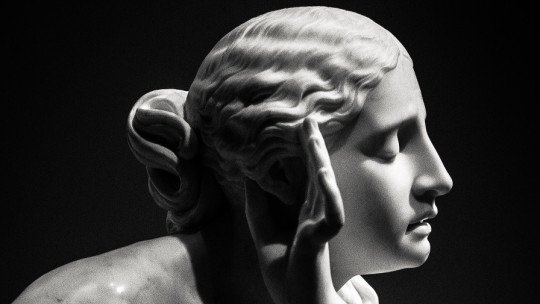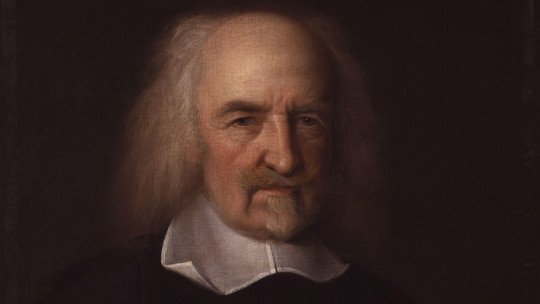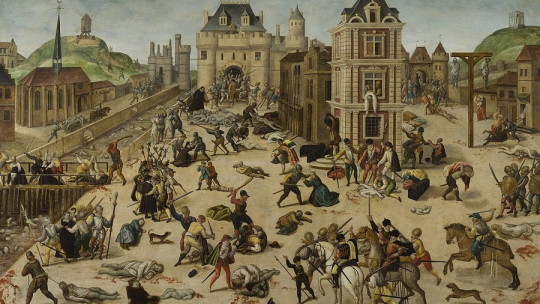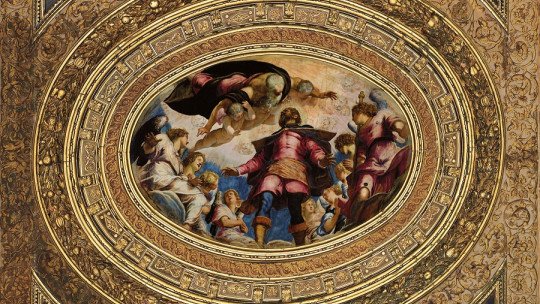
The Modern Age comprises no less than three centuries; Although, as always, limiting periods is dangerous (because we risk falling into historical absolutisms), it is true that, in this era, a series of changes arose that characterized the passage from the medieval human being to the modern human being..
In this article we are going to stop at the art of the modern age more than in the historical aspects, although, obviously, everything is related. Artistic expression cannot be understood without historical context; Therefore, we will first examine what happened in the change from the Middle Ages to the Modern Age and, later, we will focus on the 5 essential characteristics of the art of the period.
The cultural and artistic context in the Modern Age
What is known as Quattrocentothat is, the Italian 15th century, is essential to understand the changes that occurred in art The Italy of that century was made up of a mosaic of small states, led by figures from the urban bourgeoisie. These characters will protect the arts and will transform the theocentric vision of the medieval period into a humanism that will be promoted by the philosophical academies, protected by these same patrons.
In the artistic field, a turning point also occurred with the appearance of the treatise by the Roman architect Vitruvius (1st century BC). From his text, highly studied at the time, León Battista Alberti (1404-1472) created his three treatises about architecture, sculpture and painting. With this, the writer takes an important step towards the intellectualization of these disciplines, which They go from being mechanical arts (characteristics of the medieval period) to intellectual arts of free men
On the other hand, Filippo Brunelleschi (1377-1446), after studying classical antiquities in Rome (among them, the Pantheon of Agrippa), designed the dome of the Duomo in Florence, which, although it still has an approach closely linked to medieval architecture , represents a technical advance that connects it with the new vision of the world.
But the artist will go further, and definitively consolidate one of the main characteristics of the art of the Modern Age: we are talking, of course, about the codification of mathematical perspective, elaborated with a vanishing point, which entails the creation of a three-dimensional space. that would revolutionize the world of painting until the arrival of the first dissident voices from the official academy, in the 19th century. This perspective will be applied for the first time in the Brancacci Chapel of the Church of Carmine in Florence by Tommaso Masaccio (1401-1428).
From Florence to Europe
The Medici family, since the time of Cosimo the Elder and, above all, with Lorenzo the Magnificent (1449-1492), favored artistic creation and the numerous innovations produced in this area. Thus, the Medici will make Florence the most important cultural center and model of the moment, which will soon be imitated by the rest of the Italian cities and, finally, will end up spreading to the rest of Europe.
In imitation of the Florentine family, in other Italian states the leaders emulated the patronage of the Medici: the Sforza in Milan, Federico de Montefeltro in Urbino, the Gonzaga in Mantua, Sigismundo Malatesta in Rimini, and so on. On the other hand, the active trade that existed between the Italian states and the Flemish territory led to artistic exchanges between the innovations carried out in Central Europe, more linked to the naturalistic observation of reality, and the Italian ones, much more intellectualized.
Furthermore, Italy’s interest in the classical world (not only in the arts, but also in philosophy) results in a cultural change that, from the peninsula, will radiate to the entire continent during the centuries of the Modern Age.
The printing press and the expansion of ideas
One of the great inventions in history (which had a powerful influence on society, culture and the arts of the Modern Age) is the printing press, since Its use allowed the ideas to reach a greater number of people Thanks to this, the culture of humanism manages to spread throughout Europe in a short time.
In the artistic field, we must also highlight, within the framework of this intellectual revolution, the use of prints, which served to illustrate printed books. The importance of these prints in the development of art is crucial, since they not only disseminated intellectual content, but also artistic forms. Initially, the technique used was notching (currently known as xylography). Subsequently, The use of engravings on copper plates made with a burin made the illustration of books more agile and, therefore, the expansion was faster.
From a religious point of view, the printing press was fundamental, because it allowed the ideas of the monk Martin Luther (1483-1546) to expand. The Protestant Reformation was a great success, especially in central Europe, which provoked a reaction from the monarchies, which remained firm in defending Catholicism. This fact is important, since, as we will see in the next point, the art of the 16th and 17th centuries in Catholic areas will be deeply marked by the reaction anti-Lutheranknown as Counter-Reformation.
Art as a vehicle of the Counter-Reformation
The aniconic vision of Lutherans causes iconoclastic uprisings to occur in countries that embrace change and a conceptual change to occur in the sacred space of these places. On the other hand, The Catholic Church reacts to the expansion of Protestantism through the Counter-Reformation materialized in the Council of Trent (1545-1563).
Session XXV of this synod was dedicated exclusively to the way in which art should deal with religious matters. This produces an important artistic transformation, which begins in Mannerism (late 16th century) and culminates in the Baroque, during the 17th and 18th centuries.
What did the new art of the Catholic Counter-Reformation consist of? Conceptually, it went from a narrative art, which focused on the stories (often implausible) of the saints, to a representation of the image of the sacred figure with its attributes as a model of holiness These round paintings and sculptures capture a declamatory attitude in the characters represented, since if something characterizes Baroque art, it is precisely its theatricality.
Furthermore, the Counter-Reformation remains firm in the importance of the sacraments, especially that of the Eucharist, which in art is reflected in the exaltation of the tabernacles, the monstrances and all the elements related to the cult of the Sacred Form. On the other hand, the Corpus Christi festival, with all the artistic elements that it entails, acquired unprecedented importance during the Baroque period.
The 5 essential characteristics of the art of the Modern Age
In the 16th century, a series of artists emerged who drew on the change produced in the previous century. On the one hand, there is a generation that begins to work in the 15th century (which includes artists such as Leonardo, Botticelli, Perugino and Piero della Francesca, among others), and, later, we find the great artists of the Cinquecentolike Michelangelo, Titian, Raphael, Tintoretto or Il Veronese, among others. Of these artists, the Venetian school will be characterized by a composition based on color, while those belonging to the Florentine and Roman schools will give greater importance to line.
These artists will advance towards an art that will define, in broad strokes and with evident nuances, the general characteristics of the art of the Modern Age, which we briefly review below, as a summary.
1. The use of the mathematical perspective
As we have mentioned previously, during the Quattrocento a discovery will occur that will revolutionize the history of painting and that will characterize the artistic production of the Modern Age. Is about the mathematical perspective, codified by Brunelleschi and first applied by Masaccio
This technique consists of establishing a vanishing point where all the lines of the composition converge. Over time, this method evolved and artists managed to apply several vanishing points in a work.
2. The study of human anatomy
In contrast to the low value that was given to the study of anatomy in the Middle Ages, the new humanistic mentality encourages artists to analyze the body either through the dissection of corpses or through anatomy treatises, such as that of Andrea Vesalius (1514-1564), widely used at the time.
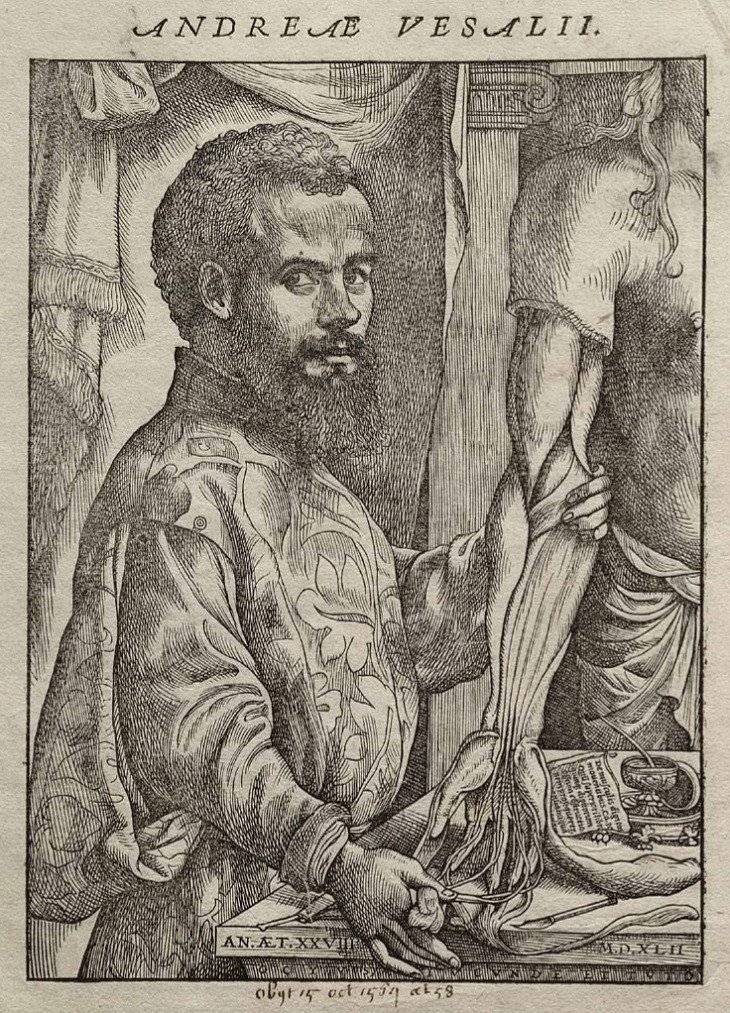
3. The importance of the portrait
Furthermore, it is during this time that the genre of portraiture becomes extremely important. In medieval society we find stereotypical portraits, since the importance fell on who the character was, not on what they were like. In other words, to identify the person in question, only the name or other distinctive features, such as those of a heraldic nature, were enough.
In the Modern Age, this will change radically. The bourgeoisie that adheres to the humanist movement wishes to be remembered with unique and concrete physical characteristics, since, following Francesco Petrarca (1304-1374), fame conquers death. Therefore, capturing the exact features of the character guarantees that, after his death, he continues to be remembered as he was. On the other hand, in the context of marriage policy, which reached its peak in the Modern Age, the European courts took advantage of this genre to make their marriageable members known to the other ruling houses.
4. The volume
During the Middle Ages, what was important was the idea that was represented in the work. However, with the arrival of the new modern aesthetic, how that idea is represented will be essential. In such a way that, compared to the flat painting of simple volumes of the Romanesque and Gothic, In the Renaissance and Baroque the realistic volume of the figures represented will be essential
5. Classicism
Modern culture begins with the rebirth of classical culture; firstly, from a philosophical and literary perspective and, later, focused from a sculptural, pictorial and architectural point of view. Early Modern artists study Roman ruins, sculptures and paintings, as well as Vitruvius’ treatise, and the forms they apply are inspired by these elements.
In this period, some works that caused a great impact were discovered in Rome, such as the Laocoon or the Belvedere Torso, which laid the foundations for a new classicist style. Another of the great discoveries was the Domus Aurea of Nero, in Rome, where some of the few examples of Roman painting that were known at that time appeared (remember that Pompeii and Herculaneum would not be discovered until the 18th century), and which were spread throughout Europe through engraving.
But the classicism prevailing in the Modern Age was not only observed in the forms. The themes also became recurrently inspired by the classical past which, without forgetting Christian culture, also represented scenes from classical mythology and the history of Rome.

